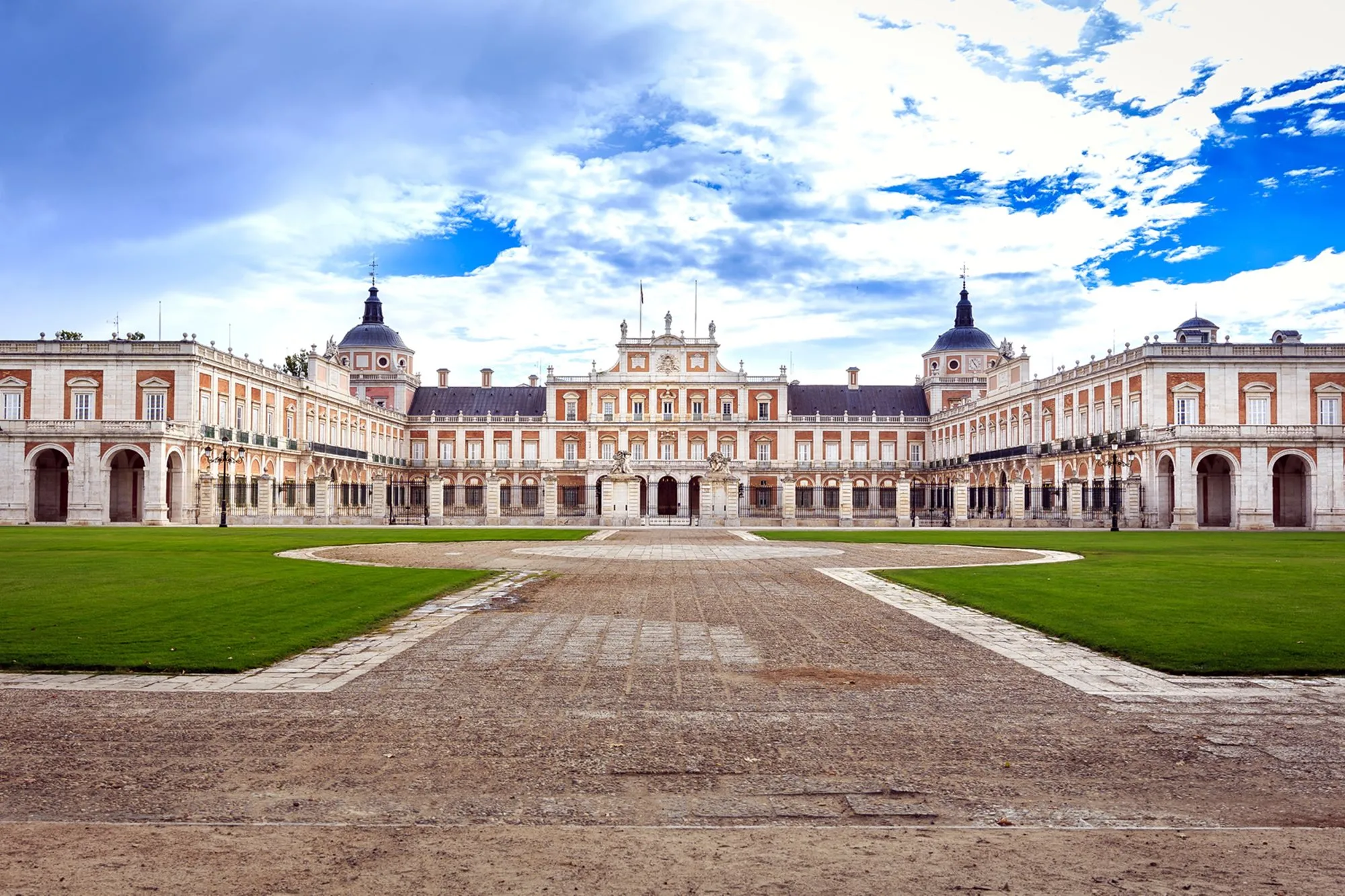
Cookie settings
We use our own and third-party cookies in order to offer our services, display videos, obtain statistics and offer personalized advertising.
For more information, please read our cookies policy.

This palace was a leisure residence in times of the Catholic Kings. Carlos V passed long stays in it, but Felipe II was who turned it into a normal place of residence for the royal family.
In the XVIII Century the Borbon dynasty embellished the complex enlarging the Royal Palace, completing the Prince´ s Garden and building Casa del Labrador, a Spanish garden which is typical from the Austria dynasty style.
Its facades are decorated with red brick and limestone. They are regular and crowned by a great balustrade. The central body stands out the rest. It is decorated with statues of the three kings that took part in the construction of this palace.
In 1748, a fire destroyed the palace, although it was rebuilt by the Italian Bonavía in the XVII Century.
Among its main rooms we should highlight the staircase carried out during Fernando V´ s reign by Bonavía in wrought- iron and golden in a Rococo style. It looks like a labyrinth with many access ramps. The whole Salón del trono (Throne Room) is covered with velvet and furnished with Rococo furniture. Here, we should highlight a painting in the ceiling that represents an allegory to the Monarchy. The Sala de Porcelana (Porcelain Room) was built between 1759 and 1765 and was carried out by Italian artists, ordered by the king Carlos III.
This room is totally covered by porcelain plates from the Fábrica del Buen Retiro in Madrid (Buen Retiro Factory). The background is white and it is decorated with garlands and relieves with Chinese and exotic themes. The Sala de Guardias de la Reina (Room of the Queen´ s Guard), is the room where the Guards of Corps, whose mission was to watch over the queen, stayed.
Other important rooms are the Gala Dining Room, the Queen´ s Room and the Oratory, which is covered with beautiful frescoes. In these rooms took part artists such as Amiconi, Bayeu and Giordano.
There are numerous gardens (Prince´ s gardens, Island Garden), that are crossed by the quiet water of the River Tajo that surrounds the palace. Among the most important gardens is the large Prince´ s Garden, with its architectural works, such as the access doors to the garden, Apollo´ s Fountain or the pond with its classic and Chinese shrines, designed by Juan de Villanueva, who also built the stately home known as Casa del Labrador.
Built: XVI - XVIII Centuries
Author: Santiago Bonavía, Juan de Herrera, Juan Bautista de Toledo, Francesco Sabatini
Style: Baroque, Herrerian, Neoclassical
Category: Civil
Type: Palace
Address and telephone
Opening times
Prices
If you see any mistakes or want to add anything to this information, please contact us.

Book your hotel